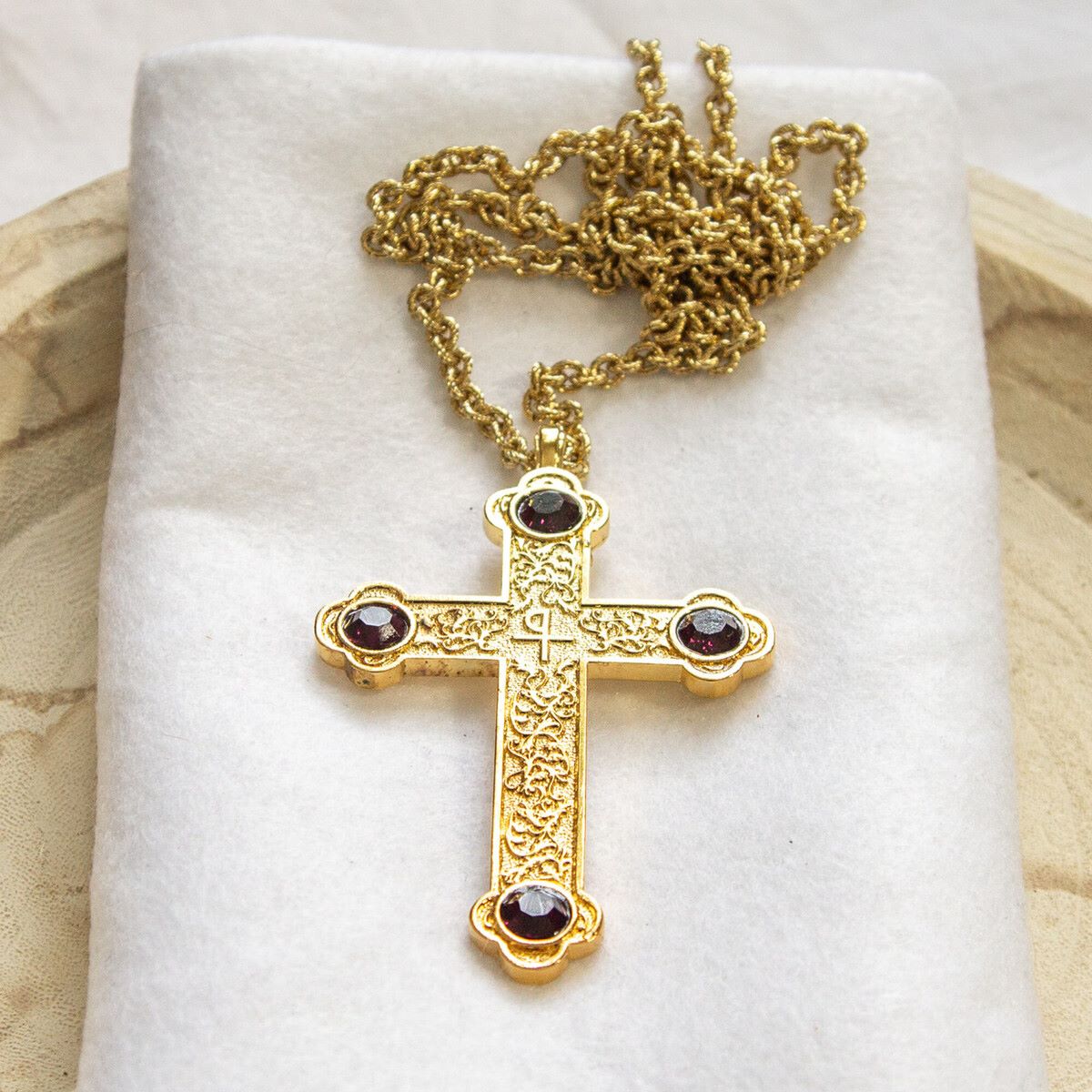
What is a pectoral cross? A pectoral cross is a large cross worn on the chest, typically by clergy members. It hangs from a chain or cord around the neck, resting over the heart. This cross symbolizes the wearer's faith and dedication to their religious duties. Often ornate, these crosses can be made from precious metals and adorned with gemstones. Historically, the pectoral cross has been a significant part of Christian liturgical attire, especially within the Catholic, Anglican, and Orthodox traditions. Its design and materials can vary, reflecting the status and role of the wearer within the church hierarchy.
What is a Pectoral Cross?
A pectoral cross is a cross worn on the chest, typically by clergy members in various Christian denominations. It holds significant religious and cultural importance.
- The term "pectoral" comes from the Latin word "pectoralis," meaning "of the chest."
- Pectoral crosses are often made of precious metals like gold or silver.
- They are usually suspended from the neck by a chain or cord.
- The tradition of wearing pectoral crosses dates back to the early centuries of Christianity.
- In the Roman Catholic Church, bishops and abbots are typically the ones who wear pectoral crosses.
Historical Significance of Pectoral Crosses
Pectoral crosses have a rich history and have evolved over centuries. They symbolize faith, authority, and devotion.
- Early Christians used pectoral crosses as a secret symbol to identify themselves.
- During the Middle Ages, pectoral crosses became more ornate and were often encrusted with jewels.
- Some pectoral crosses from the Byzantine era feature intricate enamel work.
- The cross worn by Pope John Paul II was known for its simplicity and lack of adornment.
- In Eastern Orthodox traditions, pectoral crosses are often decorated with icons of saints.
Design and Symbolism
The design of a pectoral cross can vary widely, each element carrying its own symbolism.
- Many pectoral crosses feature the crucifix, depicting Jesus on the cross.
- Some crosses include inscriptions or engravings of biblical verses.
- The shape of the cross can differ; some are Latin crosses, while others are Greek crosses.
- The use of gemstones in pectoral crosses often symbolizes the beauty of creation.
- The color of the cord or chain can also hold symbolic meaning, such as purple for royalty or red for martyrdom.
Usage in Different Denominations
Different Christian denominations have unique traditions and rules regarding pectoral crosses.
- In the Anglican Church, bishops wear pectoral crosses as a sign of their office.
- Lutheran bishops also wear pectoral crosses, often as a symbol of their pastoral role.
- In the Eastern Orthodox Church, priests may receive a pectoral cross as an award for their service.
- Some Protestant denominations do not use pectoral crosses, focusing instead on simpler symbols of faith.
- The Coptic Orthodox Church has a tradition of giving pectoral crosses to newly ordained bishops.
Modern-Day Relevance
Even today, pectoral crosses continue to be a powerful symbol of faith and authority.
- Many modern pectoral crosses are designed with contemporary aesthetics while retaining traditional elements.
- They are often given as gifts to clergy members during significant milestones, such as ordination or anniversaries.
- Some pectoral crosses are designed to hold relics, small physical remains of saints.
- The pectoral cross worn by Pope Francis is known for its simple design, reflecting his emphasis on humility.
- In some cultures, pectoral crosses are also worn by laypeople as a sign of deep personal faith.
The Final Word on Pectoral Crosses
Pectoral crosses hold a rich history and deep significance in religious traditions. These crosses, worn close to the heart, symbolize faith, authority, and devotion. From their origins in early Christianity to their modern-day use, pectoral crosses have evolved in design and meaning. They often feature intricate craftsmanship, precious metals, and gemstones, reflecting their importance.
Understanding the symbolism behind these crosses can enhance appreciation for their role in religious ceremonies and personal devotion. Whether you're a history buff, a religious scholar, or simply curious, knowing these facts can deepen your connection to this powerful symbol.
So next time you see a pectoral cross, remember its journey through history and the layers of meaning it carries. This knowledge not only enriches your understanding but also connects you to a tradition that spans centuries.
Was this page helpful?
Our commitment to delivering trustworthy and engaging content is at the heart of what we do. Each fact on our site is contributed by real users like you, bringing a wealth of diverse insights and information. To ensure the highest standards of accuracy and reliability, our dedicated editors meticulously review each submission. This process guarantees that the facts we share are not only fascinating but also credible. Trust in our commitment to quality and authenticity as you explore and learn with us.


